Here is something I made that you can go ahead and use that senses motion only on regions without transparency.
IMAGEBUTTON.java works just like an JButton except you give it an imageIcon and it sense the alpha provides class that
Use setMinimumDetectionAlpha() in case if you have any shadows coming of you png.
import java.awt.Dimension;
import java.awt.Graphics;
import java.awt.Graphics2D;
import java.awt.RenderingHints;
import java.awt.event.MouseEvent;
import java.awt.event.MouseListener;
import java.awt.image.BufferedImage;
import javax.swing.ImageIcon;
@SuppressWarnings("serial")
public class ImageButton extends javax.swing.JButton implements MouseListener{
private MouseListener mouseListener = null;
private BufferedImage bufferedImage;
private int minAlpha = 0x0;
private boolean userMouseListener = false;
public ImageButton(ImageIcon ic){
super();
setPreferredSize(new Dimension(ic.getIconWidth(), ic.getIconHeight()));
setImage(ic);
addMouseListener(this);
}
protected BufferedImage imageIconToBufferedImage(ImageIcon a){
BufferedImage bi = new BufferedImage(a.getIconWidth(), a.getIconHeight(), BufferedImage.TYPE_INT_ARGB);
Graphics2D g2d = (Graphics2D) bi.getGraphics();
g2d.drawImage(a.getImage(), 0,0,null);
g2d.dispose();
return bi;
}
public void setImage(ImageIcon ic){
bufferedImage = imageIconToBufferedImage(ic);
repaint();
}
protected void paintComponent(Graphics g){
Graphics2D g2d = (Graphics2D) g;
RenderingHints _rh = g2d.getRenderingHints();
g2d.setRenderingHint(
RenderingHints.KEY_ANTIALIASING, RenderingHints.VALUE_ANTIALIAS_ON);
g2d.drawImage(bufferedImage, 0, 0, null);
g2d.setRenderingHints(_rh);
}
protected void setMinimumDetectionAlpha(int alpha){
minAlpha = alpha == 0 ? 1 : alpha;
minAlpha = minAlpha % 0x000000FF << 0x00000010;
}
protected void processMouseEvent(MouseEvent e) {
if(checkInBounds(e.getX(), e.getY())){
switch(e.getID()){
case MouseEvent.MOUSE_CLICKED: mouseListener.mouseClicked(e); break;
case MouseEvent.MOUSE_ENTERED: mouseListener.mouseEntered(e); break;
case MouseEvent.MOUSE_EXITED: mouseListener.mouseExited(e); break;
case MouseEvent.MOUSE_PRESSED: mouseListener.mousePressed(e); break;
case MouseEvent.MOUSE_RELEASED: mouseListener.mouseReleased(e); break;
}
e.consume();
}
}
public void addMouseListener(MouseListener a){
if(!userMouseListener)
super.addMouseListener(a);
else
mouseListener = a;
userMouseListener = true;
}
protected boolean checkInBounds(int x, int y){
try{
if((bufferedImage.getRGB(x, y) & 0xFF000000)>>>4 >= (minAlpha > 0 ? minAlpha : 0x08800000))
return true;
else
throw new Exception();
}catch(Exception e){
return false;
}
}
@Override
public void mouseClicked(MouseEvent e) { processMouseEvent(e); }
@Override
public void mouseEntered(MouseEvent e) { processMouseEvent(e); }
@Override
public void mouseExited(MouseEvent e) { processMouseEvent(e); }
@Override
public void mousePressed(MouseEvent e) { processMouseEvent(e); }
@Override
public void mouseReleased(MouseEvent e) { processMouseEvent(e); }
}
you can just go ahead and use it like this
import java.awt.event.MouseEvent;
import java.awt.event.MouseListener;
import javax.swing.ImageIcon;
import javax.swing.JFrame;
public class Test {
/**
* @param args
*/
public static void main(String[] args) {
JFrame jmb = new JFrame();
ImageButton ib = new ImageButton(new ImageIcon("res/buttonImage.png"));
ib.setMinimumDetectionAlpha(0);
ib.addMouseListener(new MouseListener(){
@Override
public void mouseClicked(MouseEvent e) {
System.out.println("eventFired");
}
@Override
public void mouseEntered(MouseEvent e) {
System.out.println("eventFired");
}
@Override
public void mouseExited(MouseEvent e) {
System.out.println("eventFired");
}
@Override
public void mousePressed(MouseEvent e) {
System.out.println("eventFired");
}
@Override
public void mouseReleased(MouseEvent e) {
System.out.println("eventFired");
}
});
jmb.add(ib);
jmb.pack();
jmb.setDefaultCloseOperation(JFrame.EXIT_ON_CLOSE);
jmb.show();
}
}
the image used was something like this

I hope this helps you :D
